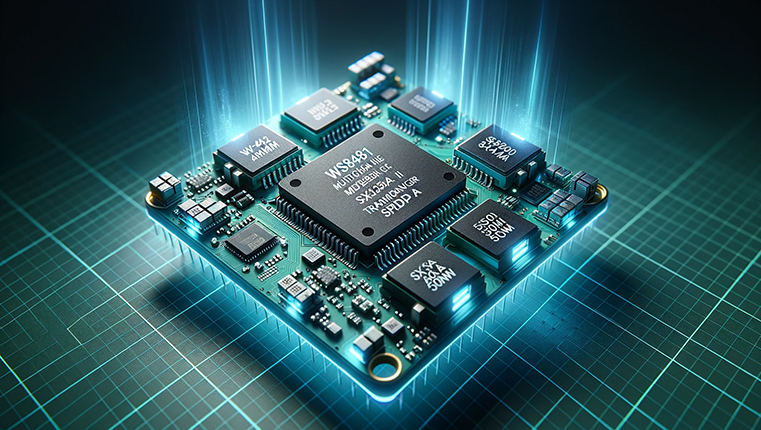Wi-SUN (Wireless Smart Utility Network) is a wireless communication standard designed for smart utility networks, including smart grids and smart cities. It provides a reliable and secure wireless infrastructure for large-scale deployments, allowing devices to communicate over long distances.
The Wi-SUN standard is based on the IEEE 802.15.4g standard, which defines the physical (PHY) and media access control (MAC) layers for wireless communication. It operates in the sub-GHz frequency bands, such as 900 MHz, which allows for better propagation and penetration through obstacles compared to higher frequency bands.
The key features of the Wi-SUN standard include:
- Mesh Networking: Wi-SUN utilizes a mesh network topology, where devices can act as routers, extending the network coverage and enabling multi-hop communication. This ensures reliable and robust connectivity, even in large-scale deployments.
- Interoperability: Wi-SUN devices are designed to be interoperable, allowing different vendors’ devices to work together seamlessly. This promotes the development of an ecosystem where multiple devices from different manufacturers can communicate and operate within the same network.
- Long Range: Wi-SUN provides long-range communication capabilities, allowing devices to communicate over several kilometers. This is particularly beneficial for applications that require wide coverage, such as smart grids and smart city deployments.
- Security: The Wi-SUN standard incorporates robust security mechanisms to protect the communication and data transmitted over the network. It includes encryption, authentication, and access control features to ensure the privacy and integrity of the data.
- IPv6 Support: Wi-SUN supports IPv6 (Internet Protocol version 6), enabling direct integration with the internet and facilitating seamless communication between devices and cloud-based services.
Wi-SUN is primarily used in utility networks, including smart grid systems, where it enables communication between smart meters, distribution automation devices, and utility control centers. It also finds applications in smart city deployments, including street lighting, parking management, environmental monitoring, and infrastructure management.
What is the difference between Lora and Wi-SUN?
LoRa (Long Range) and Wi-SUN (Wireless Smart Utility Network) are both wireless communication technologies designed for long-range and low-power applications. However, there are some key differences between the two:
- Technology: LoRa is based on a proprietary technology developed by Semtech, while Wi-SUN is based on the IEEE 802.15.4g standard.
- Frequency Bands: LoRa operates in unlicensed frequency bands, such as 868 MHz in Europe and 915 MHz in North America. Wi-SUN, on the other hand, operates in licensed sub-GHz frequency bands, such as 900 MHz.
- Network Topology: LoRa typically uses a star-of-stars network topology, where devices communicate directly with a central gateway. In contrast, Wi-SUN utilizes a mesh network topology, allowing devices to communicate with each other and extend the network coverage through multi-hop routing.
- Interoperability: Wi-SUN emphasizes interoperability and standardization, ensuring that devices from different vendors can work together within the same network. LoRa, being a proprietary technology, requires devices to use the same LoRa modulation scheme and be compatible with the LoRaWAN protocol for interoperability.
- Applications: LoRa is commonly used for various Internet of Things (IoT) applications, such as smart agriculture, asset tracking, environmental monitoring, and smart city deployments. Wi-SUN, on the other hand, is primarily focused on utility networks, including smart grids and smart cities, where it enables communication between devices like smart meters, distribution automation devices, and utility control centers.
- Data Rate and Range: LoRa offers lower data rates compared to Wi-SUN, but it can achieve longer communication ranges. LoRa devices can typically transmit data at rates ranging from a few hundred bits per second to tens of kilobits per second, while Wi-SUN supports higher data rates up to several hundred kilobits per second.
- Security: Both LoRa and Wi-SUN support security features, including encryption and authentication. However, the implementation and specific security mechanisms may vary between different deployments and vendors.
It’s worth noting that while LoRa and Wi-SUN have their specific characteristics, they are not mutually exclusive, and their usage depends on the specific requirements of the application and the available infrastructure. In some cases, they may even be used together to provide complementary wireless connectivity solutions.
What frequency bands does Wi-SUN use?
Wi-SUN (Wireless Smart Utility Network) operates in licensed sub-GHz frequency bands. The specific frequency bands used by Wi-SUN may vary depending on the region and regulatory requirements. However, the most commonly used frequency bands for Wi-SUN deployments are:
- 900 MHz: This frequency band is commonly used in regions such as North America and parts of Asia. It offers good propagation characteristics and can provide extended coverage for outdoor deployments.
- 868 MHz: This frequency band is primarily used in Europe. It provides good range and penetration capabilities, making it suitable for various smart utility applications.
- 920 MHz: This frequency band is used in some regions, such as Australia and New Zealand. It offers similar characteristics to the 900 MHz band and is suitable for outdoor deployments.
It’s important to note that the availability of specific frequency bands for Wi-SUN may vary depending on local regulations and spectrum allocation in each country or region. Therefore, it’s recommended to consult the local regulatory authorities or industry organizations to determine the authorized frequency bands for Wi-SUN deployments in a particular location.
The Wi-SUN Alliance, a global industry association, promotes the adoption and certification of Wi-SUN compliant devices to ensure interoperability and compatibility among different vendors’ products.
